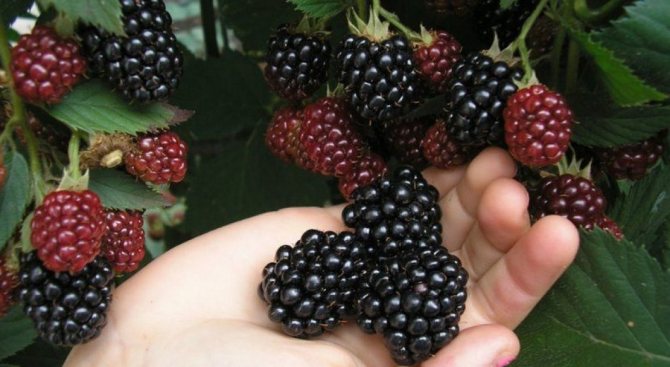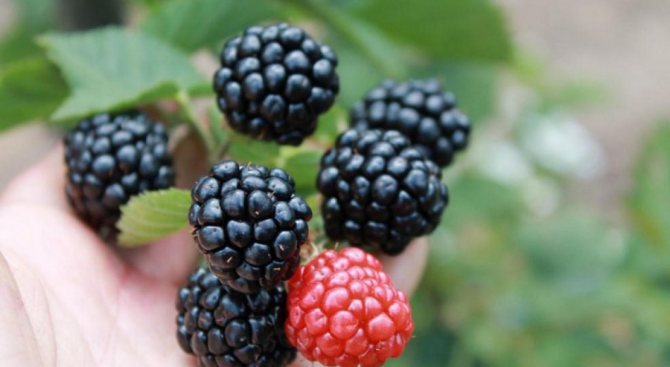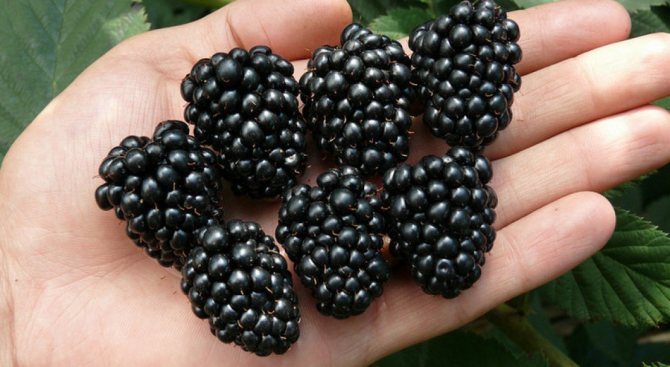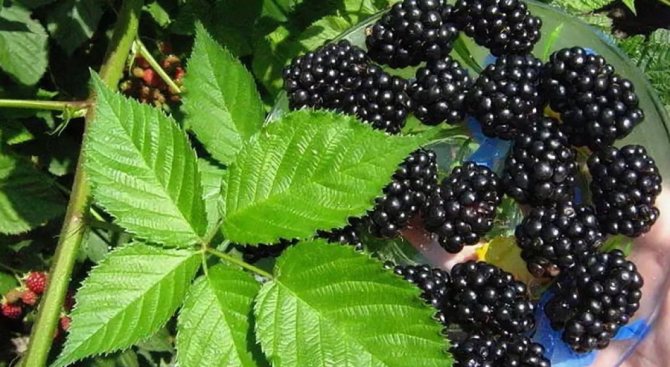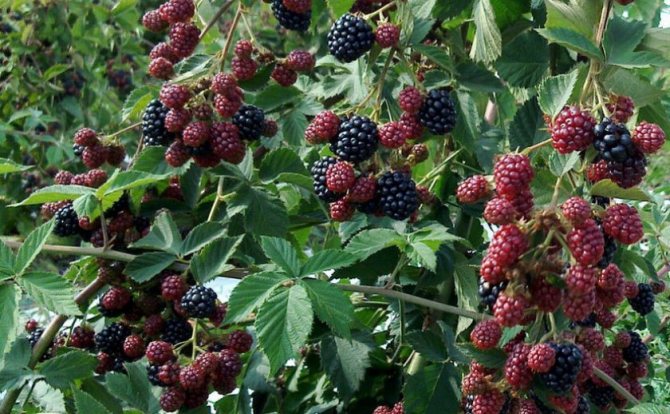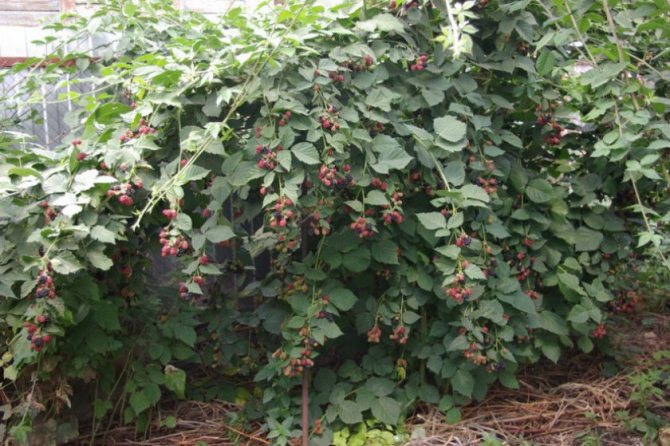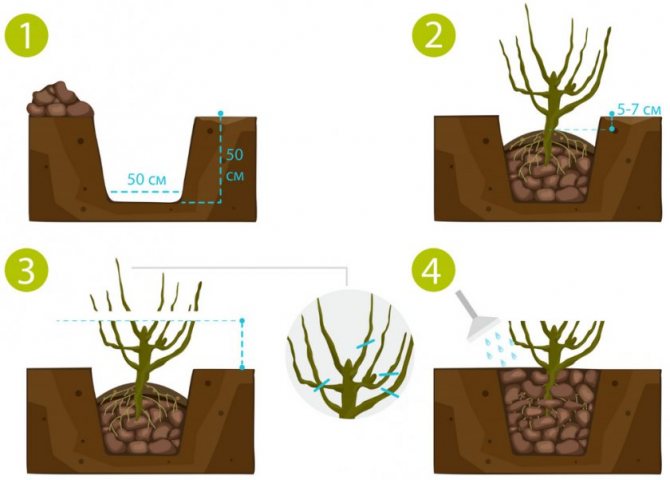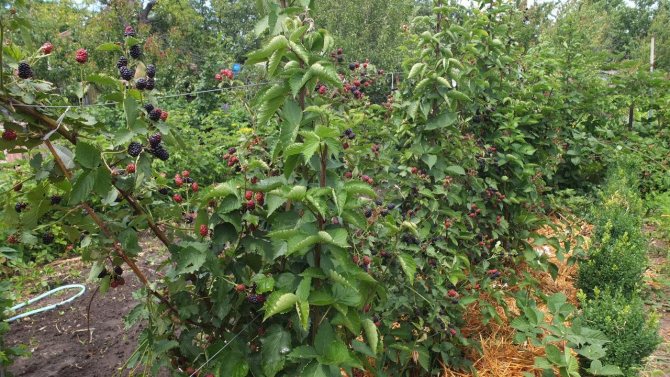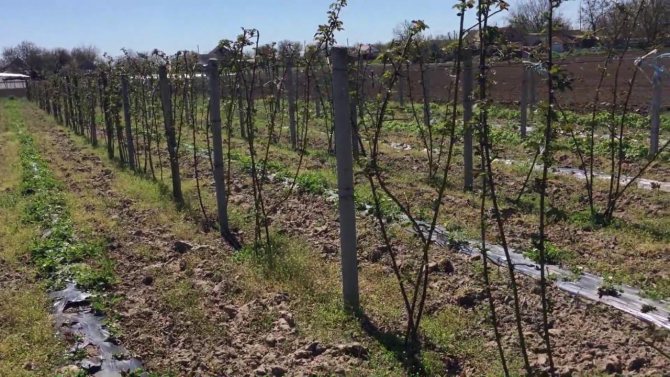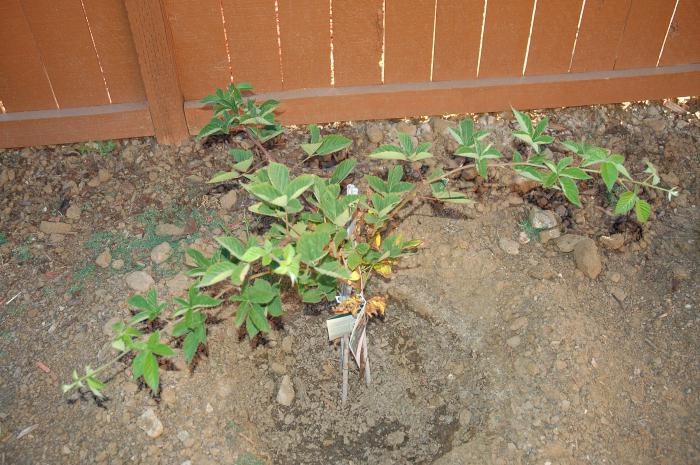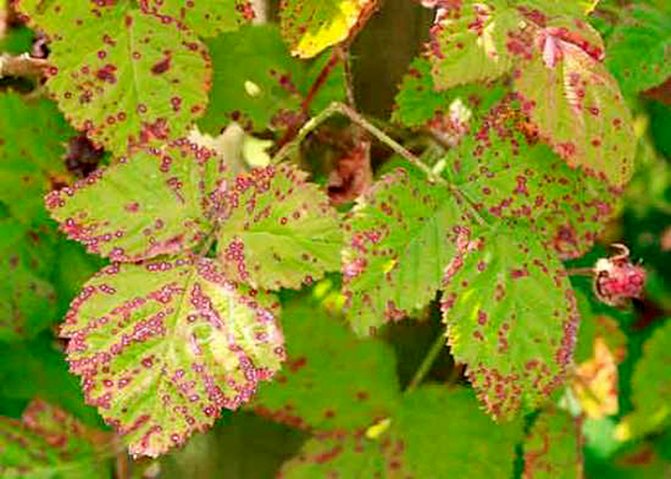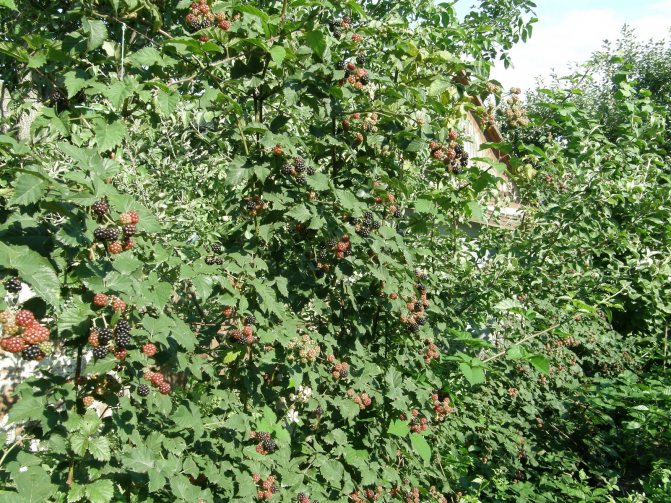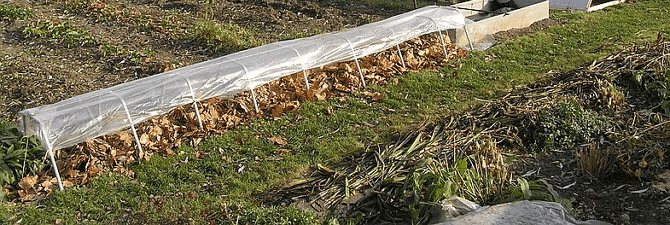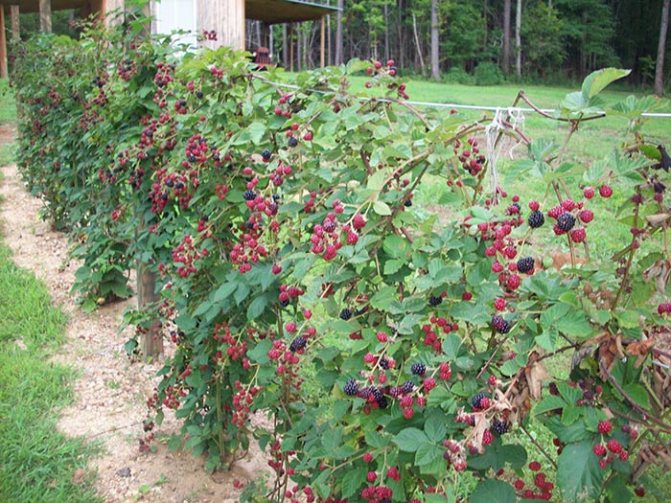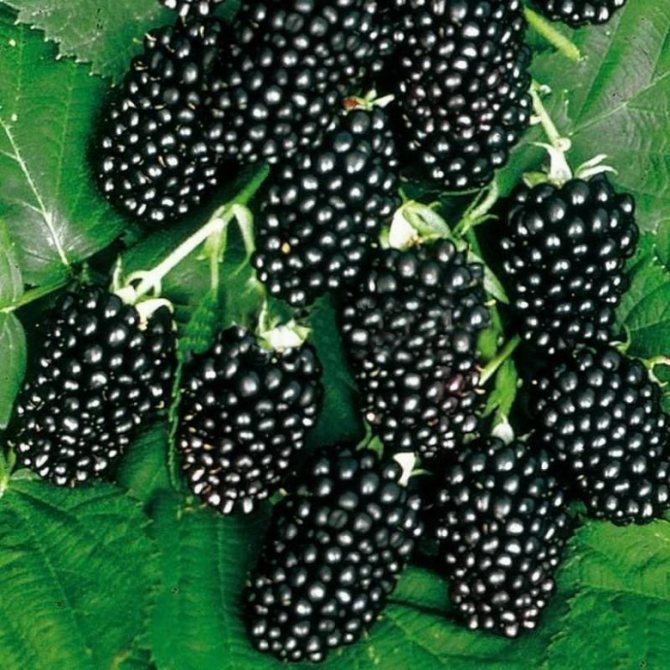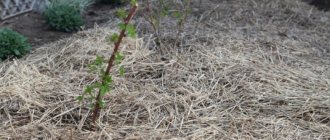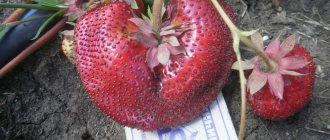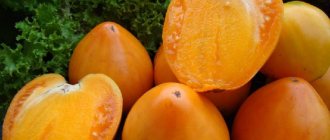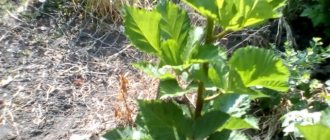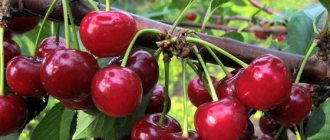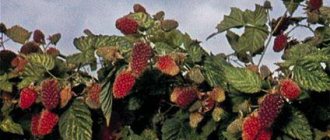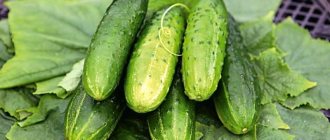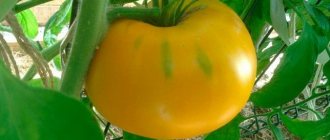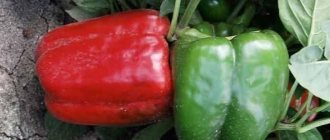Varietal characteristics
Description of the blackberry Thornfrey interests many summer residents. A distinctive feature of the culture is creeping shoots up to 6 meters long. The bushes are powerful, young branches have a green tint, mature ones cast blue. The leaf blades are dark green.
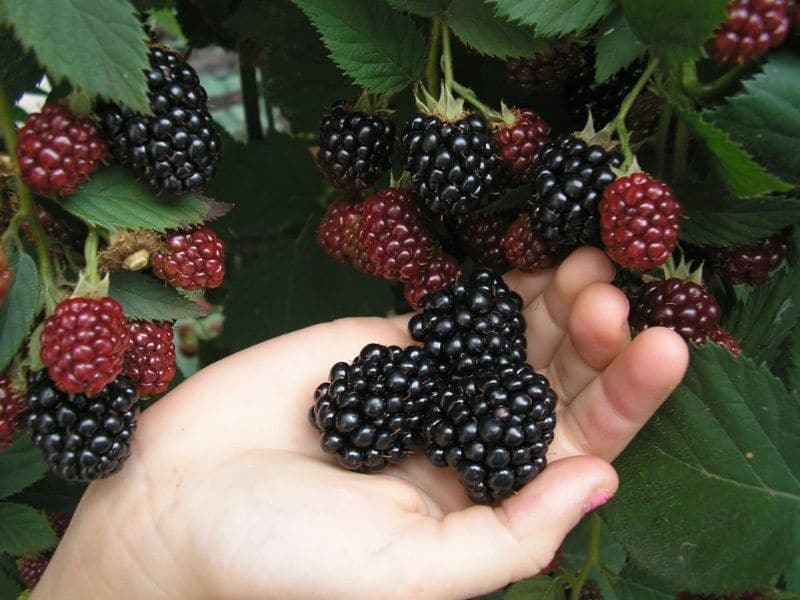
Blackberry Thornfree - a variety that is distinguished by the absence of thorns
The crop ripens on two-year-old shoots. Flowering begins in June, the flowers are quite large, they can reach 3.5 cm in diameter, have a pink tint, and have a wonderful smell.
Up to 40 berries are formed on each brush. The fruiting period is about one and a half months, the weight of the fruit can reach up to 7 grams.
For reference! With good care, up to 20 kg of crop can be harvested from one bush.
Advantages and disadvantages
The Thornfree blackberry variety, like any crop, has positive and negative qualities. The benefits of the plant include the following:
- lack of thorns, which allows you to harvest fruits without problems,
- high yield,
- excellent taste,
- unpretentious care,
- resistance to various diseases.
Despite these advantages, the plant also has negative aspects, which include:
- low keeping quality of fruits,
- need to be covered for the winter,
- late bushes do not always have time to fully mature in cold regions.
The negative sides also include the difficulty in determining the ripeness of berries - in an immature and ripe state, the berries look the same.
However, despite these disadvantages, the crop is popular and is often planted in plots. Many gardeners still prefer traditional and well-known varieties.


This variety has a large berry size
At what time of the year, in which regions it grows, is it planted
For cold places, it is recommended to use straight-resistant varieties of thornless blackberries. Curly, creeping varieties (dew) are more suitable for warm edges. Thanks to the experiments of scientists, a unique variety was developed - the Thornfree blackberry. It will yield crops in a variety of climates. The winter hardiness of the plant allows it to take root at fairly low temperatures. The shrub also reacts well to dry weather conditions. He loves sunlight, warmth.
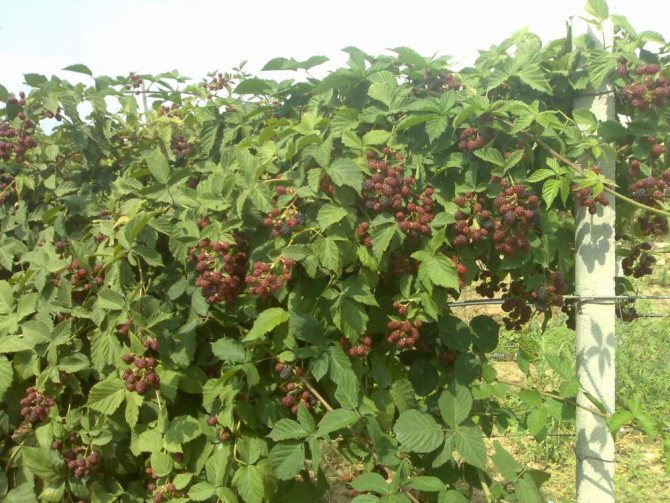

The universal blackberry Thornfree tolerates the cold of the northern regions, the heat of the southern regions:
- Siberia, the Urals, the Chelyabinsk region, and other regions, which are characterized by severe winters, can become a place for growing Thornfree. For the growth of a quality shrub, it is enough to follow simple rules. The warm season is short here. He will not let the berries get enough of the sun. For this reason, the tree is planted in well-lit, windless places. Planting begins in early spring. The plant must root thoroughly to survive the drop in temperature. After harvesting, before the onset of cold weather, the planting should be carefully covered for the winter. Periodically, the shoots are ventilated.
- The Leningrad Region, the Moscow Region, and other central regions specialize in the cultivation of this type of berry bushes. The climate is temperate here. The winters are cold. Often, frost often comes to bare ground. Spring is recommended for planting blackberries in these parts. The seedlings must get stronger to avoid hypothermia.Varieties for planting in the Moscow region can be different (agave, black satin, thornless, natchez). Thornfree is a popular option that is highly sought after by the locals.
- The southern regions (Crimea, Kuban, Rostov, Voronezh regions) offer the best conditions for the cultivation of this variety of blackberry besshipnaya. Shrubs can be planted in spring, autumn. Winters are not harsh here. Young shoots will easily take root in the soil before the onset of cold weather. Generous sun, a long warm season will contribute to the abundant flowering of the bush, a large harvest. During excessively dry periods, blackberries provide additional shelter, shade. This will avoid burns on the shoots, keep the berries juicy and ripe. For this purpose, the shrub is planted near tall trees. With spreading branches, they will create the necessary coolness. You can resort to artificial shade. A special mesh will perfectly cover the plant from excess sunlight. In these regions, there is no urgent need to cover the plant thoroughly before the temperature drops. The unpretentious shrub will easily survive the mild local winter.


The plant tolerates frequent climate changes
Growing Thornfree in various regions of Russia will not be difficult. Its unique feature is to adapt to the local climate, to endure its frequent changes. Following simple recommendations, every gardener will delight himself with an unusually tasty harvest.
Planting a plant
For the plant to develop well and bear fruit, it is important to plant and grow it correctly. Disembarkation has some features that need to be taken into account.
In the northern regions, it is recommended to plant blackberries in the spring, in which case the plant will have time to adapt and take root before the onset of the winter period. In areas with hot climates, experienced gardeners recommend planting, on the contrary, in the fall, so that sudden warming and heat do not destroy the young plant.
In other cases, spring is considered the best time to plant. Reproduction is carried out using seedlings.
The culture loves light loams, slightly acidic soil. For cultivation, it is recommended to choose a place with good illumination, but protected from drafts. In southern areas, shrubs can be placed in partial shade to protect them from extreme heat.
Attention! Fruits need a lot of heat and light to ripen.
Thornfree thornfree thornless blackberry has a powerful root system, so the groundwater should not be higher than 1 meter. For planting, a soil consisting of a mixture of a fertile layer, humus and various fertilizers is suitable. With increased acidity, lime is added before planting. The planting pit should be 50 * 50 in size.
Reproduction of garden culture
Reproduction of thornless blackberries is carried out in the following ways:
- Cuttings. To get a young plant, you need to cut the shoots in the summer, and then cut them into cuttings. Tear off all leaves and buds, lump the top. Plant in the ground, and cover with foil on top so that the plants take root as much as possible. But what varieties of blackberries exist in the Urals, this article will help you understand.
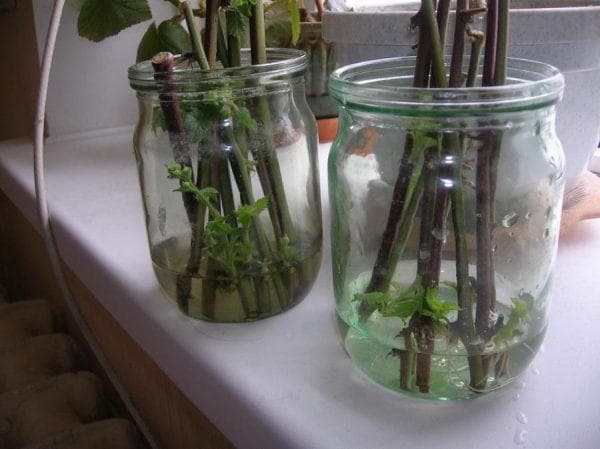

Cuttings - Rooted tops... This method is considered the easiest. Bury the top of the shoot horizontally in the ground. And only the crown will be on the surface. Water the young plant thoroughly. Before the onset of winter, cut it off from the mother, cover it. By this time, he should have formed a root system. It will also be useful to learn about how garden blackberries are planted in the spring.


Rooting tops
Thornfree Blackberry Care
Blackberry Thornfrey is an unpretentious culture. Caring for her has certain features, but will not cause any particular difficulties.
Watering
After planting in the spring, the crops are watered all summer, especially in hot regions.
After the soil dries out after the snow, adult plants begin to water - this is the period of development of new shoots and ovaries on last year's branches.
In summer, irrigation is carried out once a week during flowering and ripening of berries. Towards the end of August, the number of waterings is gradually reduced, this will help to avoid the wateriness of the berries and contribute to the woody branches.
Top dressing
Some summer residents believe that feeding this plant is not particularly needed. However, for 3-4 years, when the harvest becomes full, it is recommended to start applying various fertilizers.
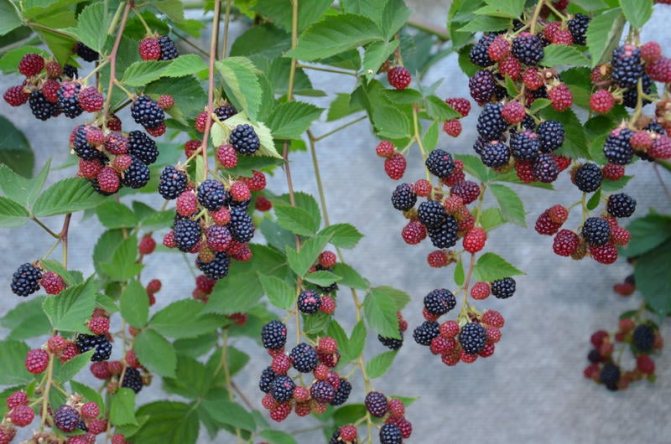

Up to 25 kg of berries can be harvested from one bush
- In the spring, nitrogen agents will work well, which will stimulate the growth of new shoots. In this case, you can use humus, saltpeter, bird droppings.
- In summer, for better ripening of fruits, various mineral complexes are used for fertilization, watered with herbal infusions.
Attention! After harvesting, ash and organic fertilizers are used for feeding, which will help strengthen the root system.
Bush formation
It is important to form blackberry bushes correctly, therefore they are grown on trellises. Several rows of wire are pulled between the supports for better placement of the shoots.
In the first year, young twigs are tied closer to the left peg, and the right side remains free. Next year, new shoots are tied up closer to the right pillar.
The result is a convenient location for harvesting. Blackberries bear fruit on the lateral branches of the last year.
Pruning
In the fall, it is required to cut off last year's shoots that have already yielded. Young branches are removed from the supports and cut by about a third.
Gardeners reviews
- Marina. Thornfree is an excellent blackberry, it is not for nothing that it has been grown all over the world for so many years. I have 3 bushes in the garden, there are enough berries for my head to eat fresh and freeze for the winter. Very tasty and smells divine - during ripening in the garden, this fabulous smell soars constantly. The berries are not very well stored, especially if you take them somewhere, but if you collected them in your garden and put them in the refrigerator, this disadvantage is not felt.
- Victor. To be honest, I do not understand the general delight - yes, there are tasty and large berries, there is a lot of fiddling with the bush - in order to harvest a normal harvest, you literally have to walk and see if the time has come. If you miss the moment, you will collect the porridge. Now there are modern varieties that are much better, in my opinion, and Thornfree is planted out of habit.
- Angelina. The best berries, I love Thornfree! I was planted on the site, I'm not overjoyed for the third year. There are no thorns at all, so caring for blackberries is also fun for children, they collect them. We live in the northern region, so for the winter the bush literally wraps itself up, but in general, you don't need a lot of time to leave, and if you forget something, the bush will still give a normal harvest.
Shelter for the winter
The plant tolerates frosts well down to -20 degrees. However, in the northern regions, it is important to build a shelter. The branches are bent to the ground, covered with straw, covering material, cardboard from above.
It is not recommended to use a film, because the plant under it in spring may simply die.
In summer, young branches must be bent to the ground and fixed in this position. Then in the fall it will be easy to lay them down and cover them from frost.
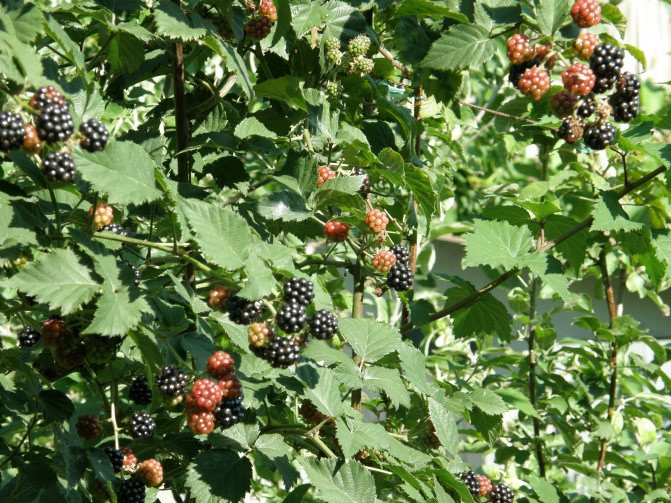

During planting, a certain distance between the bushes should be observed
Pest and disease control, prevention
Thornfree blackberries are resistant to diseases such as stem cancer, rust and anthracnose. However, if the rules of care are violated, the plant becomes susceptible to any diseases and pests.
It is not recommended to plant the crop next to other berries, because this increases the risk of developing green mosaic. Therefore, the distance between landings should not be less than 100 meters.
A negative effect can be exerted by:
- Gall mite. Stays on the bush all winter. It affects flowers and fruits, the plant does not develop, does not bloom. The berries remain green, do not ripen, gradually turn yellow and disappear. Infected branches are cut off, the rest is treated with garlic infusion.
- The roots often suffer from beetle or bear larvae. To get rid of, use special means.
- With a lack of iron and magnesium in the soil, chlorosis may develop. You can fix the trouble with the help of special fertilizers.
- Treating purple spot with Bordeaux liquid will help.
- Blackberries are attacked by aphids and caterpillars, which can be eliminated with the help of insecticides.
When carrying out preventive treatments, diseases and damage by pests can be avoided.


Under suitable conditions, the crop is good for a long time.
Berry quality and yield
Blackberries of this variety have a fairly high yield. From one bush, they collect from 20 to 25 kilograms of berries.
Fruit ripening occurs from late July to mid-August. Experienced summer residents recommend harvesting in the morning or evening in dry weather.
At a temperature of 0 degrees and an average humidity of 90%, the harvest lasts up to a couple of weeks; in a warm room, the period is only three days. Freezing is considered the best option.
The Thornfree Blackberry is an excellent variety that is distinguished by its complete absence of thorns. It is not difficult to grow a plant on the site and take care of it, even a beginner can handle the process. It is important to follow all the rules and take into account the peculiarities of the culture. The plant gives a high yield, the berries are distinguished by an excellent taste.
Fruit
In August, flowers on the shoots replace berries. They ripen for about a month, usually from August to September. The more the blackberry ripens, the lower the shoots fall - the brushes often end up practically on the ground.
It should be noted that the ripening period at Thornfrey can shift quite a lot - depending on weather conditions and other factors.
Oval or broadly conical berries of deep black color with a purple tint. Ripe berries are usually dull.
Blackberry Thornfree smells recognizable and very pleasant aroma. The berries are sweet, juicy and delicious. Perfect for fresh consumption, but also good for other purposes - freezing, preserving, drying.



